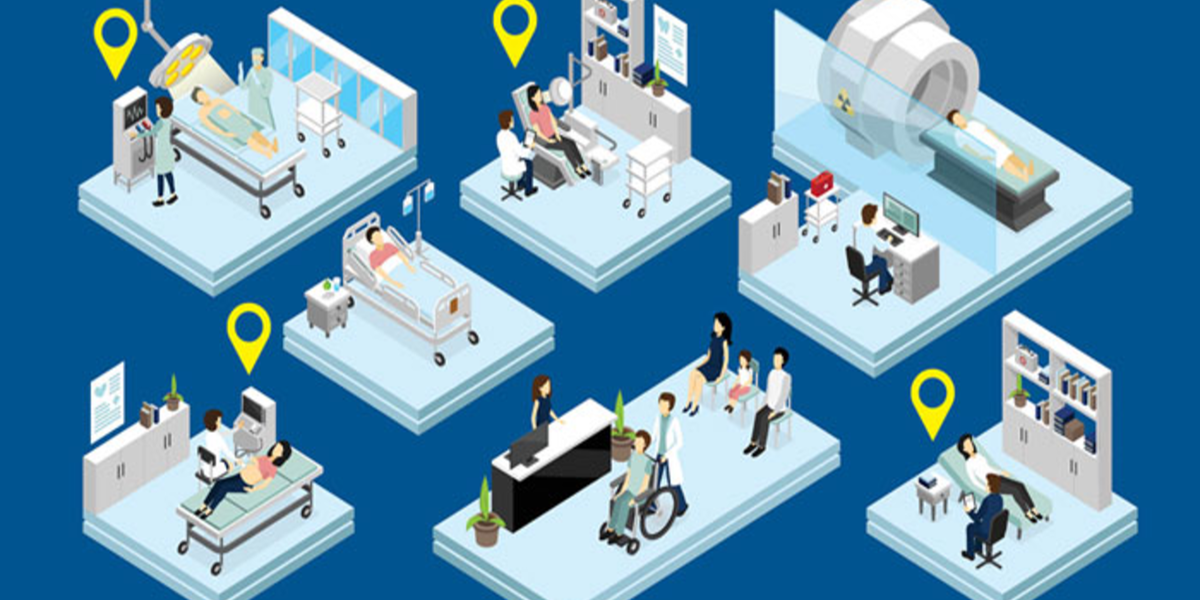Today’s hospitals are facing unprecedented challenges with the ongoing pandemic. Many are looking for ways to cut costs, improve efficiency but still provide the quality of care their patients need. For these reasons (and many others), healthcare management teams are looking to Real-Time Location Systems (RTLS) to help overcome some of their challenges.
For starters, RTLS in healthcare is a system used to provide the real-time tracking of medical equipment (i.e. wheelchairs), staff and even patients. RTLS solutions use different technologies (based on their applications) such as WiFi, Bluetooth Low Energy (BLE), ultrasound and RFID tags to name a few. Each technology uses different approaches and each method supports different applications and/or solves a different challenge. The key to a successful RTLS deployment lies in choosing the right RTLS options for the application(s) or problem(s) at hand. In addition, it’s imperative to understand the different aspects involved such as physical location, environment (indoor/outdoor), current infrastructure, deployment costs, power requirements, possible interference etc.
For many healthcare management IT teams, the goal is to improve operational efficiency and optimize resources while still ensuring patient satisfaction and quality of care. Below are just a few reasons why many healthcare management teams are leveraging the power of Bluetooth technology to help reach their goals and overcome these challenges.
Low Energy
The functionality of BLE enables small sensors to run off batteries for months, and in some cases, years. This is what makes it possible for us to find Bluetooth technology in billions of devices and also making this technology ideal for the various medical devices found throughout a hospital. Among these devices are glucose monitors, blood pressure monitors and body temperature sensors. With Bluetooth, medical equipment can remain connected with little concern over battery life. In short, low energy means low maintenance costs which translate into reduced overhead costs for hospitals.
Security
Bluetooth technology must adhere to strict security regulations set forth by the U.S. federal security regulations. Some of these standards include the following: government-grade AES 128-bit encryption to meet both NIST and FIPS compliance. That being said, Bluetooth has implemented security and privacy standards while still providing the flexibility device manufacturers need to deliver the best security possible for end-users. For a hospital, Bluetooth is being used as the technology to connect all devices while still ensuring patient data and other sensitive information remains secure at all times.
Functionality
In addition to low deployment costs and advanced security, today’s hospitals are getting creative with the multitude of capabilities offered by Bluetooth technology. Among these capabilities are asset and patient management. Many of today’s hospitals are using manual and costly methods of managing and tracking hospital equipment. For example, medical staff are still using RFID chips and in some cases pen and paper methods to track and locate equipment. Both methods rely on a human to physically check in and out equipment.
We have often seen nurses dashing to get a crash cart to respond to an ER emergency (i.e. cardiac arrest). However, by using Bluetooth beacons, today’s hospitals are beginning to automate these situations. Similarly, imagine if all patient ID bands had Bluetooth beacons that would show their past and present medical history to any physician that walked into the room. By removing cables and wires from all the devices connected to a patient, medical staff could treat a patient “wire-free”. Second, mobility is improved because patients equipped with medical sensors can move freely from room to room and still have their data synced automatically. Clearly, Bluetooth technology presents many technical functionalities that are advantageous for hospitals.
Considering the benefits of Bluetooth technology mentioned above among many others, it’s clear that this wireless technology is setting the standard for connected health solutions and is set to become as prevalent in hospitals as it is in our daily lives.








